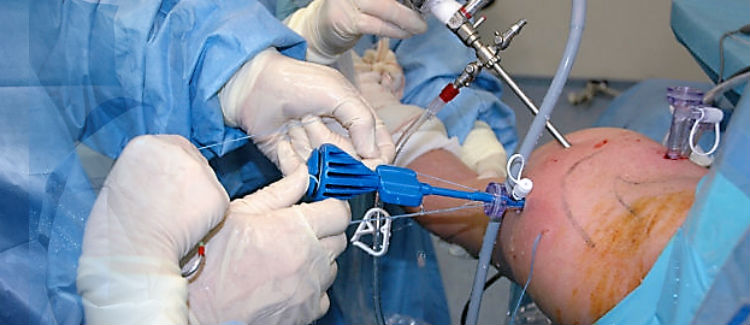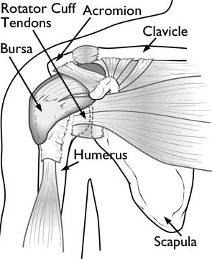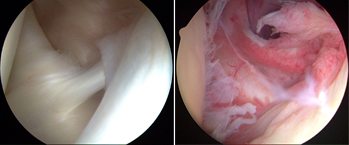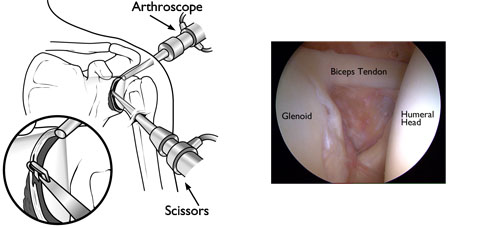Shoulder Arthroscopy


Arthroscopy is a minimally invasive procedure used by orthopaedic surgeons to inspect, diagnose, and repair issues inside a joint. This technique has revolutionized how shoulder problems are treated, allowing for quicker diagnosis, more precise treatment, and faster recovery compared to traditional surgery.
Advancements in shoulder arthroscopy tools and techniques continue to improve every year, enabling expert surgeons to deliver superior outcomes with less pain and downtime.
Understanding Shoulder Anatomy
The shoulder is one of the most complex and mobile joints in the human body. It consists of three main bones: the upper arm bone (humerus), the shoulder blade (scapula), and the collarbone (clavicle).
Ball and Socket. The rounded head of the humerus fits into a shallow socket on the scapula called the glenoid. Both surfaces are covered with smooth articular cartilage that allows painless and frictionless movement.
The glenoid is surrounded by a ring of strong fibrous cartilage known as the labrum. This structure acts as a gasket, providing stability and cushioning to the shoulder joint.
Shoulder Capsule. Bands of ligaments form a capsule around the joint, keeping it stable. The capsules inner lining, the synovium, produces lubricating synovial fluid essential for smooth joint movement.
Rotator Cuff. A group of four tendons surround the shoulder capsule, attaching the humerus to the scapula and keeping the arm bone centered in the socket. This tendon group is known as the rotator cuff.
Bursa. A lubricating sac called the bursa lies between the rotator cuff and the acromion (bone on top of the shoulder), facilitating smooth tendon movement during arm motions.
When Is Shoulder Arthroscopy Recommended?
Shoulder arthroscopy is advised when shoulder pain or dysfunction does not improve with nonsurgical treatments such as rest, physical therapy, or anti-inflammatory medications and injections.
Common causes of shoulder problems include injury, overuse, and age-related degeneration. Arthroscopy can effectively treat conditions affecting the rotator cuff tendons, labrum, cartilage, ligaments, and other soft tissues, providing pain relief and improved function.
- Rotator cuff repair
- Bone spur removal
- Labrum repair or removal
- Ligament repair
- Removal of inflamed tissue or loose cartilage
- Treatment for recurrent shoulder dislocation
Normal Anatomy of the Shoulder

Shoulder Arthroscopy

These photos taken through an arthroscope show a normal shoulder joint lining (left) and an inflamed joint lining damaged by frozen shoulder.
What happens during Surgical Procedure?
Once in the operating room, you will be positioned so that I can easily adjust the arthroscope to have a clear view of the inside of your shoulder. I personally prefer Lateral decubitius position. In this position the patient lies on his or her side on an operating table.
I will first inject fluid into the shoulder to inflate the joint. This makes it easier to see all the structures of your shoulder through the arthroscope. Then I will make a small puncture in your shoulder (about the size of a buttonhole) for the arthroscope. Fluid flows through the arthroscope to keep the view clear and control any bleeding. Images from the arthroscope are projected on the video screen showing your surgeon the inside of your shoulder and any damage.

(Left) During arthroscopy, your surgeon inserts the arthroscope and small instruments into your shoulder joint. (Right) An arthroscopic view of the inside of the shoulder joint.
Once the problem is clearly identified, I will insert other small instruments through separate incisions to repair it. Specialized instruments are used for tasks like shaving, cutting, grasping, suture passing, and knot tying. In many cases, special devices are used to anchor stitches into bone.

(Left) An arthroscopic view of a healthy shoulder joint. (Center) In this image of a rotator cuff tear, a large gap can be seen between the edge of the rotator cuff tendon and the humeral head. (Right) The tendon has been re-attached to the humeral head with sutures..
How would be Recovery Like?
After surgery, you will stay in the recovery room for 1 to 2 hours before being shifted to room. Nurses will monitor your responsiveness and provide pain medication.
Tell me something about Rehabilitation
Rehabilitation plays an important role in getting you back to your daily activities. An exercise program will help you regain shoulder strength and motion. I will develop a rehabilitation plan based on the surgical procedures you required.
If you have had a more complicated surgical repair, I may recommend a physical therapist to supervise your exercise program.
It is important that you make a strong effort at rehabilitation in order for your surgery to succeed.
What can be the possible Complications?
Most patients do not experience complications from shoulder arthroscopy. As with any surgery, however, there are some risks. These are usually minor and treatable. Potential problems with arthroscopy include infection, excessive bleeding, blood clots, and damage to blood vessels or nerves.
I will discuss the possible complications with you before your operation.



